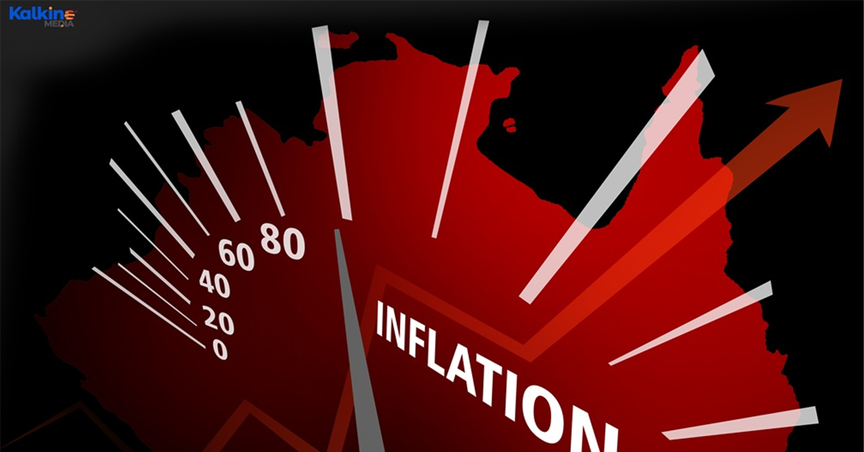Highlights
- Amidst a rapid rise in prices, some market pundits are speculating whether the economy is looking at hyperinflation.
- High inflationary pressures have stemmed primarily from the pandemic and the related policy measures taken to counter its effects.
- The ongoing price momentum has not seen any considerable slowdowns, fuelling inflationary concerns.
In the COVID-19 era, experts have time and again highlighted the difficulties attached to rising price levels across the globe. Concerns of rising inflation emerged as most economies, including Australia, tried to revive from the economic slump triggered by pandemic-induced disruptions.
However, the economic recovery seen in 2021 was enough to make some forecasters hopeful that the Australian economy may be back on track. In this recovery journey, some market pundits are speculating whether the local economy could witness hyperinflation amidst the rapid rise in prices.
While the economy has seen improved performance in late 2021, it has subsequently noticed a rise in wages and prices. No doubt, some degree of price increase is desirable as even the central bank has kept inflation as a threshold for raising interest rates. However, a substantial rise in prices beyond a certain level could be concerning.
Meanwhile, previous experiences with excessive inflation (hyperinflation) have taught economists that it is best to steer clear of the scenario.
RELATED READ: How would inflation further affect sectors? 5 pointers to note
Is the Australian economy on the brink of hyperinflation?
What is hyperinflation?
Hyperinflation refers to the scenario of excessive inflation, where price increases are rapid. In technical terms, hyperinflation is considered a situation where prices increase by more than 50% in a month or by about 1000% in a year. Hyperinflationary scenarios were typical during the days of the war when the absolute dearth of resources led to sky-high prices. A common example quoted is people in Germany taking out cash in wheelbarrows to buy a loaf of bread.

This dystopian sounding phenomenon has mostly been observed during an acute shortage of goods and extreme printing of money. In the present era, there have not been many instances of hyperinflation as the concept has been largely feared by experts. Experts usually take appropriate policy measures to ensure that such a scenario does not persist in the economy.
Are hyperinflation fears building up in Australia?
Australia has seen rising inflationary pressure for several months now. These pressures have primarily emerged from the pandemic and the related policy measures taken to counter its effects. During the September quarter, Consumer Price Index (CPI) rose 0.8%. Meanwhile, in the 12 months to September 2021, CPI increased by a massive 3%.
MUST WATCH: Australian core inflation rises to its fastest pace since 2015
During the quarter, the transport segment saw a price rise of 3.2% relative to the previous quarter. This was the largest rise in any sector within the economy and highlighted the huge supply chain constraints plaguing global economies. While the situation is gradually improving, market pundits advise businesses to remain prepared for further rises in inflation levels.
Most economies are undergoing similar conditions where price rises are occurring at unprecedented levels. A prominent existing feature of supply chains is the just-in-time model. Up until now, supply chains in Australia seem to have relied on this short-term-focused model, which requires inventory to be as little as possible to minimise warehousing costs. However, the pandemic has taught an important lesson to build up robust inventory to allow room for shipment delays in certain circumstances.
DO NOT MISS: Good news for Aussies, jobless rate dips to 13-year low
Where does Australia stand?
Experts are sitting on the fence on whether Australia could sink into a hyperinflation scenario. The ongoing price momentum has not seen any considerable slowdown, fuelling inflationary concerns. Meanwhile, supply-side bottlenecks, combined with soaring demand, appears to have created the perfect concoction of factors needed for hyperinflation.

However, modern research suggests that countries are less likely to land up in such a situation in the present era. In fact, current-day examples of hyperinflation are quite less. Thus, experts are hopeful that Australia will be able to weather this storm smoothly, though some help from the central bank might be needed. Moreover, interest rate hikes, expected to occur later this year, could cool off the price rises in the property market to some extent.
In a nutshell, businesses can expect prices to rise but not such splendidly that hyperinflation can take place. As it is, Australia’s inflation scenario seems better than the United States, where fiscal stimulus has led to even more massive price increases, raising alarm bells. More clarity will be presented when the quarterly data on inflation is released tomorrow, on 25 January 2022.
ALSO READ: Has the Australian property market reached its peak?



